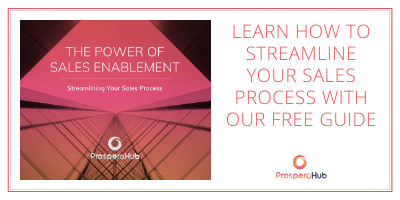Successful sales enablement involves a lot more than just updated content and some automated processes. B2B organisations are making huge investments into deploying programs of sales enablement including the implementation of tools and updated processes. But it is important to begin with a detailed understanding of the people, processes and enterprise-wide insights which must be combined in order to make for a truly successful sales enablement program. By looking at the bigger picture, all levels of your sales team are able to make both strategic and tactical contributions to the performance of the department by operating much more efficiently and effectively.
Here are seven best practices to help you succeed with your sales enablement efforts.
1) Grow your team with the best and right people
With such a shift in buyer behaviours, the ways in which we require our sales professionals to engage and interact with prospects has changed. Modern sales enablement strategies and disciplines require professionals who are more flexible and teamwork-orientated than in times go by.
This means that when implementing a program of sales enablement, the goal should be to not only hire sales representatives who are highly skilled and knowledgeable but also those who are will be able to adopt the mindset needed to implement your new systems and processes.
2) Understand how your sales team currently work
A full audit and assessment of the current sales processes and tools is the most efficient way to get a clear understanding how your team is currently operating. Only with these insights can you begin to understand where the bottlenecks and inconsistencies within your sales system lie.
When reviewing the processes undertaken by the sales team you should take into consideration both the official processes and any individual steps or actions your sales representatives might take.
3) Provide ongoing & continual training
The highest performing sales reps will be those that fully understand every aspect of their organisation and their industry. To ensure they maintain that knowledge, and that the knowledge is shared among the entire team, it is highly beneficial to conduct regular training sessions. Training should cover a number of topics, from product sales training, buyer personas and vitally your organisation's unique sales processes.
Your company should have a number of clearly defined buyer personas, and your sales team must have a clear understanding of their needs if they wish to build the crucial trust needed to close a deal. Training should focus on the primary concerns your buyer personas share, what they want to hear and how to best communicate this.
A sales rep with poor product knowledge reflects horrifically on your organisations brand image, so product sales training is key. In Technology, products and constantly being updated so it is vital your training materials reflect this. Understanding the value of the product or service and how it can alleviate the real business challenges your personas face is key.
In order to optimise your work environment for sales enablement, it is important to ensure that your representatives all have a clear understanding of the sales processes. These processes should be clearly defined and easily accessible to every member of the team. This should also enable new colleagues to learn the process quickly and lower the risk of any potential mistakes. Your sales process will be constantly refined to match changes within your industry (or at least it should be), so ensure you are continually looking at best practices and assessing what is working and where your processes could be streamlined. Not only should your team be updated when a change is implemented they should actively be involved in the decision-making process to make these decisions.
4) Make sales enablement a collaboration
In order to succeed, a sales enablement strategy needs to be embraced at an enterprise level. If sales perceive this shift as something being forced upon them by the marketing department, it will fail. The implementation of this strategy needs to be a collaborative and open one, remember “the goal of the collaboration is not collaboration, it's better results!” – Morton Hansen, Management & Collaboration thought leader at the University of California.
Your sales representatives will be using the various sales enablement processes every day, so it is important to gather their insights and ideas on how best to put this into practice. By including them in the development of the strategy, they will be more open to deploying it.
5) Map sales enablement to the buyers' journey
We operate in industries with long buying cycles, this is just a fact of life. For example, the average lifespan for an ERP system is between 5-10 years and the buying cycle can be 12-18 months long, this timescale will not shorten in the foreseeable future. These solutions come at a great cost to an organisation, and when you are making a decision that will affect the company for 5-10 years you will be dealing with highly informed buyers.
By mapping out the sales enablement strategy to mirror the buyer's journey you can arm your sales representatives with the content they need to match the customer's current life cycle stage. Using automation you can drip feed information to your awareness stage prospects until they are sales ready, allowing your sales team to focus their efforts on closing decision stage prospects, without letting any leads go cold.
6) Continually review
Sales enablement is not something you can design once, then leave to its own devices your organisation experiences change constantly, you may move into new markets, you may merge with a competitor or experience a great deal of growth, your processes may become outdated quickly or they may even become neglected.
Identify an individual to take ownership of the process and an individual to own the outcome. The process owner should ensure the processes fit into the companies’ policies, that they do not disrupt any other business processes and that they meet the project's objectives. This person is unlikely to also be responsible for outcomes, the sales manager or director should take ownership of the sales enablement wins or losses. This allows the outcome owner to provide accurate and up-to-date data on what is working and what is not and the process owner to work with those actually using the practices to refine the processes.
7) Integrate sales enablement business wide
Sales enablement requires input from multiple teams, not just the sales department. Throughout the entirety of your customer’s life cycle, it is inevitable that they will come in contact with many departments, much more than just the sales and marketing teams. This means that in order to create long-lasting relationships with happy customers and to secure repeat purchase it becomes essential to deliver a consistent customer experience across all contact points.
By implementing a consistent sales enablement program business wide you can ensure that everyone in the organisation has been empowered to support the core sales team with the ability to align the right resources to the right prospect. Each department understands their role in ensuring the right information, tools and subject matter can be delivered in a way which is relevant to each selling situation.
Learn more about how you could empower your sales team with our free eBook: The Power of Sales Enablement- Streamlining your Sales Processes
![7 Best Practices for Successful Sales Enablement Programs [Free Ebook]](https://www.prosperohub.com/hubfs/PH%20-%20Blog%20-%20Resized%20Images/HubSpot%20Sales%20Enablement%20by%20ProsperoHub.jpg)


.png?width=1940&height=1024&name=Part%20of%20Siloy%20logos%20(2).png)



.png?width=125&height=125&name=DataMigration534x534%20(1).png)
-1.png?width=125&height=125&name=Untitled%20design%20(4)-1.png)
